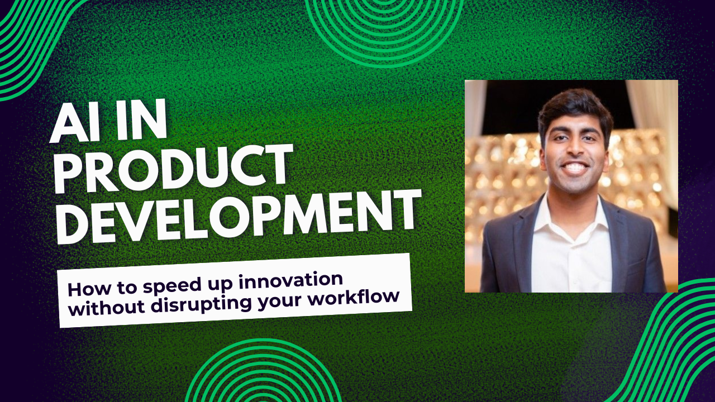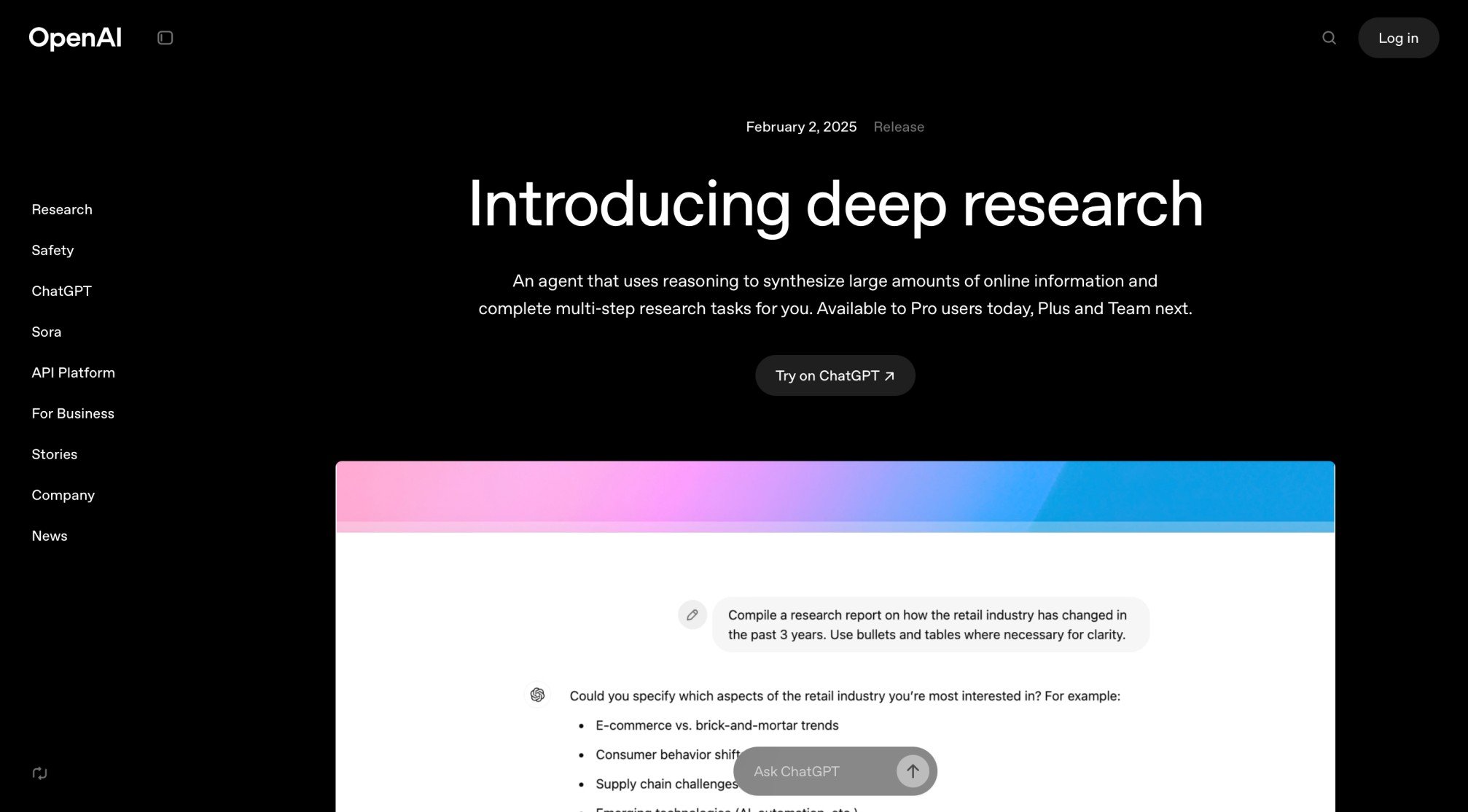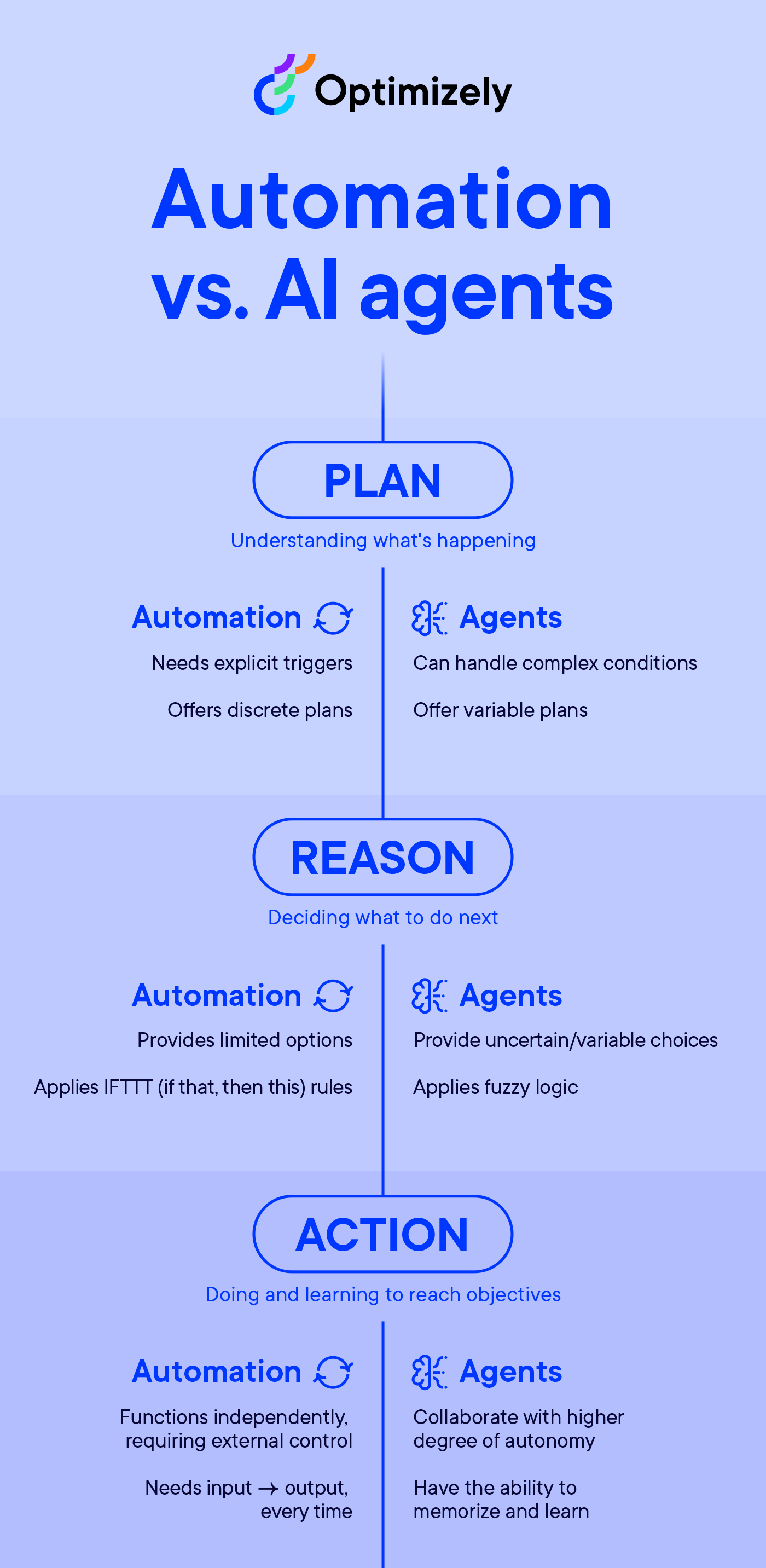AI in product development: How to speed up innovation without disrupting your workflow
Building a product is no small feat. It takes countless hours of planning, ideating, and collaborating. Then comes the revision process, testing, and feedback loops, all before a product even reaches the hands of users. Here's how AI can help you.


Building a product is no small feat. It takes countless hours of planning, ideating, and collaborating. Then comes the revision process, testing, and feedback loops, all before a product even reaches the hands of users.
Well, that's where the real challenge begins.
According to Userpilot, top-performing companies observe that 65% of users who complete important actions see a product's value. Average companies only see 17% of users reach this point, which means most users never fully engage with their product. Fewer people using your product means they'll miss out on seeing the value and are unlikely to renew their subscription.
Building a great product with perfect market fit is everyone’s goal but let's be real - understanding your users, digging into data, and building prototypes takes a ton of time.
Still, understanding potential users, getting deeper insights from customer data, and building prototypes, all take more time than the market is willing to offer you.
Some products hit the market with little brainstorming while others roll out too late. According to a report by Undo, debugging software failures costs a whopping $61 billion annually. That's BILLION with a "B." This is proof that the status quo product development lifecycle falls short, but with AI rapidly evolving, I believe this is becoming more data-driven, and dare I say..."less painful."
And here's how.
AI is not the solution itself
Yes, AI cannot do everything for you.

Gif source: Giphy.com
AI tools are there to help you build better features and products faster, but they won’t do an end-to-end job for you. As a product team, you should evaluate your product development process for AI readiness. It means assessing the existing infrastructure, availability of quality data, and the technical capabilities of your team.
Involving AI doesn't make the process much different from a standard one. Following your standard product development practices and understanding user requirements is still paramount.
AI as your strategic partner across the product development lifecycle
Calculators didn’t replace mathematicians, and AI won’t replace your team. Think of AI as your ultimate sidekick that handles the repetitive tasks, crunching massive amounts of data, and offers suggestions so you can focus on what matters: Innovation.
Since 2018, there's been a 131% increase in experiments as companies discover that systematic, AI-enhanced product development beats boardroom opinions every time. Let's explore how AI transforms each phase of the product development lifecycle:
1. Ideation and problem definition
Imagine trying to analyze thousands of customer feedback points. AI instantly identifies critical insights and recurring issues, translating them directly into structured requirements that could lead to breakthrough features.
- AI analyzes market trends and processes customer feedback to identify emerging needs.
- Generate potential hypotheses based on defined parameters.
- Evaluate ideas against pre-defined success criteria.
- Create comprehensive product requirement documents (PRDs) from identified user needs and business goals.
- Use case: An e-commerce company can use AI to scan the web to analyze customer reviews, social media, and global trends, along with internal information such as support tickets. Plus, identifying feature requests with the highest potential impact across different user segments.

Image source: Optimizely Opal
2. Design and prototyping
- Create multiple design variations from a single concept.
- Generate interactive images and presentations from simple prompts.
- Transform product requirement documents (PRDs) into wireframes and functional prototypes.
- Use case: A product team can use AI design tools to transform wireframes into fully interactive prototypes, testing five different navigation approaches with users in just two days instead of two weeks.
For example, you can use Gamma AI to create presentations in minutes.
3. Development
- AI excels in helping write new code, especially in writing unit tests, a mundane task for most developers.
- Detect bugs and suggest fixes before they reach production. Optimize queries for performance.
- Use case: A software development team can use AI coding assistants to generate entire code snippets, auto-fill repetitive coding patterns, debug issues, write unit tests, and optimize queries for performance, allowing developers to focus on complex business logic.
4. Quality assurance and experimentation
- Generate comprehensive test scenarios based on user behavior patterns.
- Identify edge cases human testers might miss.
- Prioritize issues based on potential business impact.
- Use case: A fintech company can use AI experimentation capabilities to simulate thousands of transaction scenarios, and detect UI glitches, crashes, or performance issues ahead of time that would have been nearly impossible to discover manually.
5. Go-to-market launch
- AI-assisted documentation and creation of content/assets (support docs, 1-pagers, demos, blog posts, etc.)
- Predict initial user adoption and engagement rates and create personalized onboarding experiences for different user segments.
- Use case: A SaaS platform can use AI to analyze user behavior during onboarding, automatically adjusting the experience for different user types and improving activation rates without manual intervention.
For example, Storylane helps you create demos in 2 minutes.

Image source: Storylane
6. Continuous optimization
- Analyze user behavior to identify improvement opportunities.
- Generate A/B test hypotheses based on usage patterns.
- Predict churn risk and suggest retention interventions.
- Use case: A subscription service can use AI to identify subtle patterns in user engagement that predict potential churn weeks before traditional metrics show warning signs, enabling proactive retention campaigns.
Getting started with AI without disrupting workflows
Three steps.
Step 1: Identify high-effort, low-value tasks
The most effective way to introduce AI into your product development process is by targeting the manual, repetitive tasks that consume your time and add little strategic value.
Product teams are increasingly turning to AI solutions like ChatGPT's Deep Research to:
- Analyze massive datasets to uncover emerging market trends
- Compile competitive intel in minutes instead of weeks
- Discover consumer sentiment patterns across various demographics
- Synthesize industry reports to extract actionable insights
The implementation is straightforward yet powerful:
- Teams define their research objectives clearly
- They craft detailed prompts with specific parameters and format requirements
- The AI delivers structured, comprehensive research in whatever format is most useful
- Product managers follow up with targeted questions to fill knowledge gaps
 Image source: Open AI deep research homepage
Image source: Open AI deep research homepage
Step 2: Start small and scale strategically
Begin with one phase of the product development lifecycle rather than attempting a complete AI transformation:
- Start with AI-powered market research before expanding to design
- Use AI to analyze existing customer feedback before applying it to generate new solutions
- Implement AI in internal processes before customer-facing applications
With AI: AI-powered optimization for experiments improves the entire workflow.

Image source: Optimizely
Step 3: Use AI to generate, not dictate
Establish clear boundaries between AI assistance and human decision-making:
- AI generates options; humans make final decisions
- All AI outputs undergo human review before implementation
- Critical strategic choices remain firmly in human hands
- AI supports rather than replaces domain expertise
When you combine AI with experimentation, it creates a powerful approach to product development, one that tackles five key challenges:
-
Breaking down silos: According to Gartner, less than a third of employees are satisfied with workplace collaboration. AI-powered workflows capture ideas from everyone.
-
Maximizing limited resources: Our analysis of 127,000 experiments shows peak effectiveness at 1-10 tests per developer annually. AI enables non-technical team members to run experiments independently, freeing engineers to focus on core features.
-
Unifying customer experiences: AI prevents disconnected touchpoints by integrating data across channels. Advanced algorithms deliver personalized experiences without requiring hundreds of manual user segments.
-
Measuring business outcomes: AI connects experiment results directly to revenue and lifetime value, moving beyond surface metrics to demonstrate real business impact.
-
Enabling predictive development: The greatest advantage is shifting from reactive to predictive development by identifying issues before they affect users, predicting outcomes of new features, and spotting emerging needs before they become widespread.
The growing role of AI agents in product development
AI agents are the next big leap in how products are conceived, tested, and refined.
Shafqat Islam, President and CMO at Optimizely, predicts that by 2030, "most online interactions will be driven by AI agents" completely transforming the way teams build and innovate.
Think of AI agents as autonomous members of your product team:
- They independently execute specific product development tasks
- Make data-driven decisions about product features without human bottlenecks
- Continuously learn from user interactions to improve product recommendations
- Work across design, testing, and analytics platforms simultaneously
- Deliver personalized product experiences based on real user behavior

Image source: Optimizely
More impact will be seen when specialized agents start working together across the product lifecycle. For example:
- Insight mining agent: Scan the web (social media, news, websites) or customer reviews, support tickets, surveys, or product usage (heat mapping or session replay data) to detect top customer pain points to fix.
- Prototyping agent: Design multiple different variants of design patterns following accessibility standards, brand guidelines, and internal component library.
- QA testing agent: Create and execute unit, integration, and regression tests automatically.
- GTM enablement agent: Create all supporting material necessary for a successful launch of a new feature (support docs, 1-pagers, blog post, image screenshots, demo walkthrough, etc.)
- Experimentation advisor agent: Recommend new ideas for the next experiment to run.
- Personalization advisor agent: Identify opportunities to deliver personalized content to your end users.
To avoid roadblocks, maintain human oversight on critical product decisions and focus on integrated AI solutions rather than disconnected tools.
The future of AI in product development
The future isn't AI vs humans. It's AI-powered humans vs the rest.
Here are three practical steps to begin integrating AI into your product development process:
- Start with a single phase: Target one area with the most friction - ideation, testing, or analysis.
- Focus on collaboration: Let AI handle repetitive tasks while humans make strategic decisions.
- Measure the impact: Track metrics before and after implementation to quantify improvements.
The success of AI in product development depends on three things: smart implementation, workflow integration, and human oversight.
Your team should remain in the driver's seat as AI will improve decisions, but it doesn't make them for you. Products succeed when they solve real problems. AI helps you identify and validate those problems quickly, so you can build solutions people want.
Optimizely Opal works alongside your team at every stage of product development, helping you create, test, and improve faster than ever. Give it a clear direction, and you'll find the sweet spot between AI speed and human creativity.

